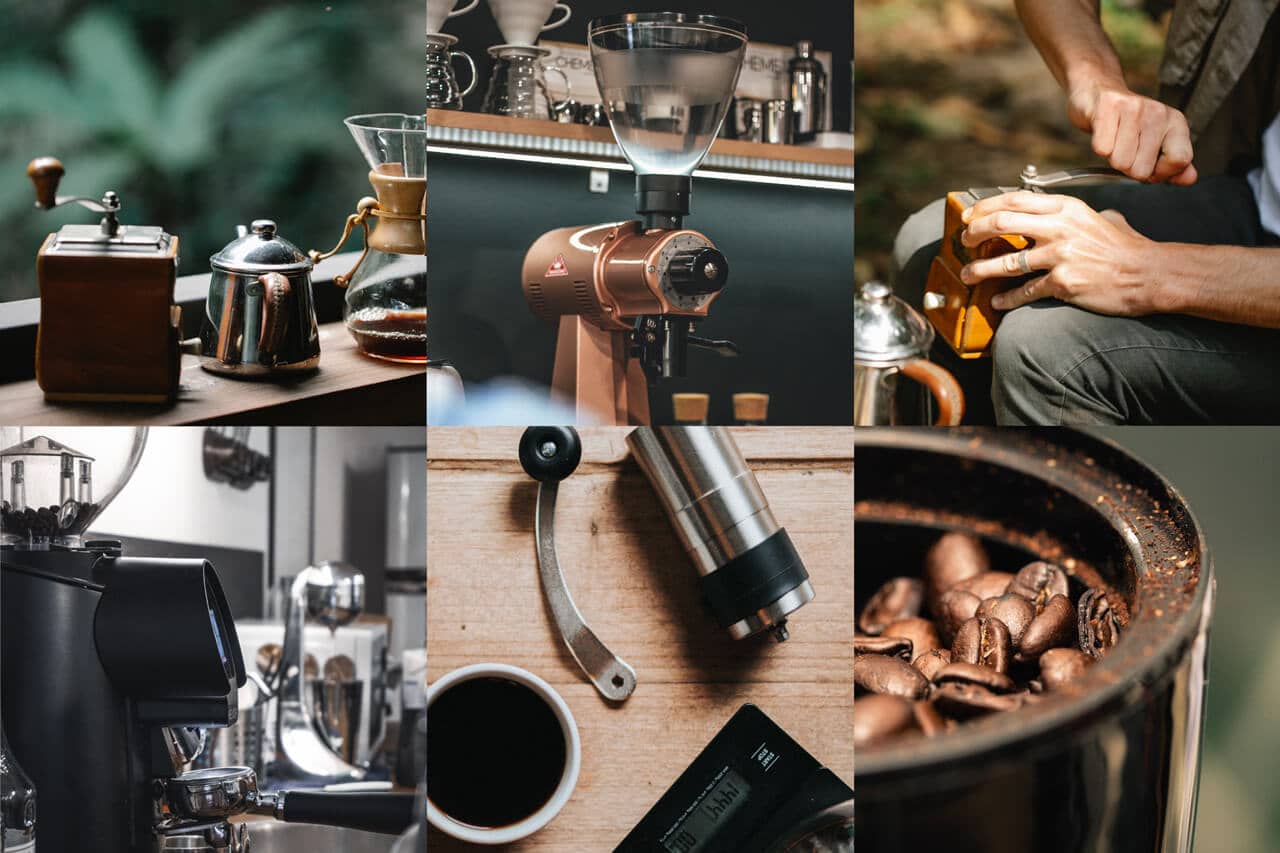- Coffee prep
The indulgence of grinding coffee yourself.
Imagine freshly ground coffee… just the smell alone justifies having your own coffee grinder. But of course, also the quality of perfectly ground beans gets every coffee fan excited. So: Coffee grinders. A topic you could discuss for hours.

Kristin Oldenburg
Let’s start with the basics: Why grind coffee in the first place? Because it increases the surface area of the coffee significantly and the flavors can be extracted. If you like, try brewing coffee with unground beans – you will get an unenjoyable brew.
Which brings us to the grinding degree.
There is a rule of thumb:
The finer the grinding degree, the faster the flavors are extracted by the water. Here, you find an overview of which grinding degree you need for which brewing method and for which coffee, or which roast.
Other than that: Just try and learn.
Just experiment with your favorite coffees – because every coffee is different. Dark roasts, for example, tend to be a bit more brittle and might need to be ground a little coarser. But with what?
photos:
michael burrows von pexels
ana neves, james-kovin, nathan dumlao und dan smedley on unsplash

fotos: michael burrows von pexels
ana neves, james-kovin, nathan dumlao und dan smedley on unsplash
Electrically or manually? Flat or conical burr? Or blade? Ceramic? Stainless steel?
When you type in “coffee grinder” into the search engine with the capital G, you get 49,400,000 results withing fractions of a second. Oof. So, the actual question should be, what the grinder must do. The answer: To grind evenly. With emphasis on “evenly”.
Unfortunately, the pretty common (and cheap) electrical blade grinders cannot do that. They have a rotating metal blade that slices up the beans. The result is a mixture of fine and coarse pieces, which of course does not allow the flavor to develop correctly.
Flat and conical burr grinders function completely different: No matter if electrically or manually, the beans are ground between two flat surfaces or the cone and the inner side of the grinder. The gap between the two surfaces can be set by the user (grinding degree). The grind is very consistent, because it only falls through the gap when it has reached the wanted size. Burr grinders are more expensive than blade grinders – but the result is worth it.
Almost a question of philosophy.
Flat or conical burr grinder?
Conical burr grinders are designed to have a lower speed, preventing the coffee from getting too hot during the grinding, which has a positive impact on the flavor (flat burr grinders rotate at the rate of about 1,300 revolutions per minute (rpm), conical burr grinders at about 400 rpm). Yet, the used material might compensate that, since ceramic does not get as hot as stainless steel. In the end, your budget is the decisive factor. But if you asked us, we would always invest more into a good coffee grinder than, for example, into a professional espresso machine. A consistent grinding degree is what matters most.
No matter which grinder you choose, you should definitely follow the recommendations of the manufacturer and change the burrs regularly. Because when the burrs dull the coffee is not „cut properly“, but rather squeezed. That again leads to a flat and bitter flavor.
And nobody wants that.



